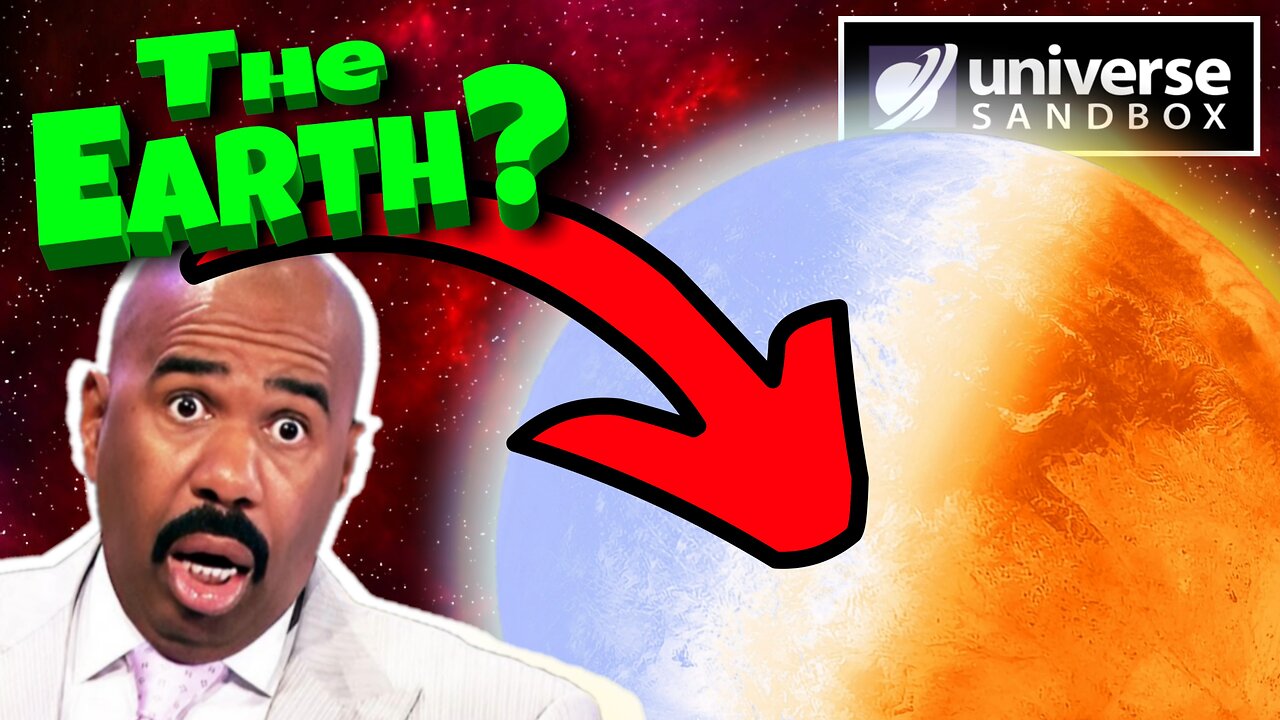Premium Only Content

UNIVERSE SANDBOX - Habitable Zones of Alpha Centauri, TRAPPIST-1, Proxima and R136a1 & The Presence
What is the Habitable Zone?The habitable zone (HZ) refers to the region around a star where conditions may be just right for liquid water to exist on the surface of orbiting planets. This concept is crucial in the search for extraterrestrial life, as liquid water is considered essential for life as we know it. The habitable zone is often referred to as the “Goldilocks zone,” indicating that it is neither too hot nor too cold, but just right for maintaining liquid water.Defining the Boundaries of the Habitable ZoneThe habitable zone has both an inner and outer boundary: Inner Boundary: This is where temperatures become so high that a runaway greenhouse effect occurs. In this scenario, greenhouse gases trap heat, causing temperatures to rise until any existing water boils away. For example, Venus is thought to be within the inner edge of our Sun’s habitable zone but has experienced such an effect. Outer Boundary: Conversely, this boundary represents the point at which temperatures are too low for liquid water to exist. Here, even with greenhouse warming, surface temperatures cannot remain above freezing. Mars currently sits near this outer boundary and may have had conditions suitable for liquid water in its past.Factors Influencing Habitable ZonesSeveral factors influence the location and extent of a star’s habitable zone: Star Type and Luminosity: The type of star significantly affects its habitable zone. Larger and hotter stars have wider habitable zones located farther from them, while smaller and cooler stars (like red dwarfs) have narrower zones that are much closer to their surfaces. Planetary Atmosphere: A planet’s atmosphere plays a critical role in determining its surface temperature. Factors such as greenhouse gas concentrations, reflectivity (albedo), and atmospheric circulation can all impact whether a planet can maintain liquid water. Internal Energy Sources: Some celestial bodies may harbor subsurface oceans heated by internal processes like radioactive decay or tidal heating, allowing them to support life even if they lie outside their star’s habitable zone.Examples of Potentially Habitable ExoplanetsAstronomers have identified several exoplanets that fall within their stars’ habitable zones. Notable examples include Proxima Centauri b and three planets in the TRAPPIST-1 system. These planets are roughly Earth-sized and are located within regions where conditions might allow for liquid water under suitable climatic circumstances.
Effects of Placing Earth 1 A.U. from R136a1To understand what would happen to Earth if it were placed 1 astronomical unit (A.U.) from R136a1, we need to analyze several key factors: the star’s luminosity, temperature, radiation output, and the implications for Earth’s atmosphere and surface conditions.1. Luminosity and Temperature of R136a1R136a1 is one of the most luminous stars known, with a luminosity of approximately 4.7 million times that of the Sun (L☉). Its effective temperature is around 46,000 K. This extreme luminosity and temperature mean that R136a1 emits an enormous amount of energy across various wavelengths, including ultraviolet (UV) radiation.2. Distance ComparisonThe standard distance for Earth from the Sun is defined as 1 A.U., which is about 93 million miles or approximately 150 million kilometers. If Earth were placed at this same distance from R136a1, it would receive significantly more energy than it does from our Sun due to the vast difference in luminosity.3. Radiation ExposureAt a distance of 1 A.U. from R136a1, Earth would be exposed to intense radiation levels far beyond what life on Earth can tolerate. The high-energy UV radiation emitted by R136a1 would likely strip away Earth’s atmosphere over time, leading to severe consequences for any potential life forms.4. Surface ConditionsThe extreme heat generated by R136a1 would cause surface temperatures on Earth to rise dramatically. Given that the habitable zone for such a massive star extends between approximately 2,500 and 5,100 AU, being at just 1 AU would place Earth in an environment where temperatures could exceed those found in a typical desert on Earth today—potentially reaching thousands of degrees Celsius.5. Atmospheric EffectsWith such high temperatures and radiation levels: Water on Earth’s surface would vaporize almost instantly. The atmosphere would become uninhabitable; any remaining gases could be ionized or blown away into space. Life as we know it would not survive; even extremophiles adapted to harsh conditions on Earth would likely perish.
SOCIALS:
YouTube - https://www.youtube.com/@TheBetterNASAProject
Rumble - https://rumble.com/user/WhatsNextVids
Odysee - https://odysee.com/@WhatsNext:5?view=home
TikTok - https://www.tiktok.com/@the.better.nasa.project
X - https://x.com/WhatsNe75388303
SUPPORT:
Patreon - https://www.patreon.com/user?u=37594401
Buy Me A Coffee - https://buymeacoffee.com/whatsnext
Cash App - https://cash.app/$YTpayments
-
 LIVE
LIVE
Game On!
18 hours ago $2.07 earnedAnother FOOTBALL FRIDAY! Weekend Preview And BEST BETS!
18 watching -
 31:55
31:55
ZeeeMedia
19 hours agoHow Gold & Silver Fight Against Digital ID ft. Bill Armour | Daily Pulse Ep 148
7.26K9 -
 13:29
13:29
Clintonjaws
15 hours ago $15.01 earnedCNN Host Stops Show & Plays Surprise Clip Forcing Democrat To Correct Lie
44.7K25 -
 14:55
14:55
World2Briggs
19 hours ago $1.91 earnedThe 10 U.S. Cities Americans Can No Longer Afford — 2025 Edition
20.4K -
 8:19
8:19
Millionaire Mentor
17 hours agoATC Whistleblower EXPOSES Obama’s Dirty FAA Secret
13.4K10 -
 2:05:30
2:05:30
BEK TV
1 day agoTrent Loos in the Morning - 11/21/2025
12.1K2 -
 LIVE
LIVE
The Bubba Army
23 hours agoCHICAGO SUBWAY FIRE ATTACK - Bubba the Love Sponge® Show | 11/21/25
1,264 watching -
 57:31
57:31
Side Scrollers Podcast
18 hours agoBlabs VS DuckTales
16.5K10 -
 8:52
8:52
MetatronGaming
15 hours agoOverwatch 2 New Hero Vendetta La Lupa
116K11 -
 1:37:16
1:37:16
omarelattar
1 day agoEx-Mafia Boss: I Made $8 Million Every Week Until The FBI Destroyed My Life! What I Learned...
30.8K2